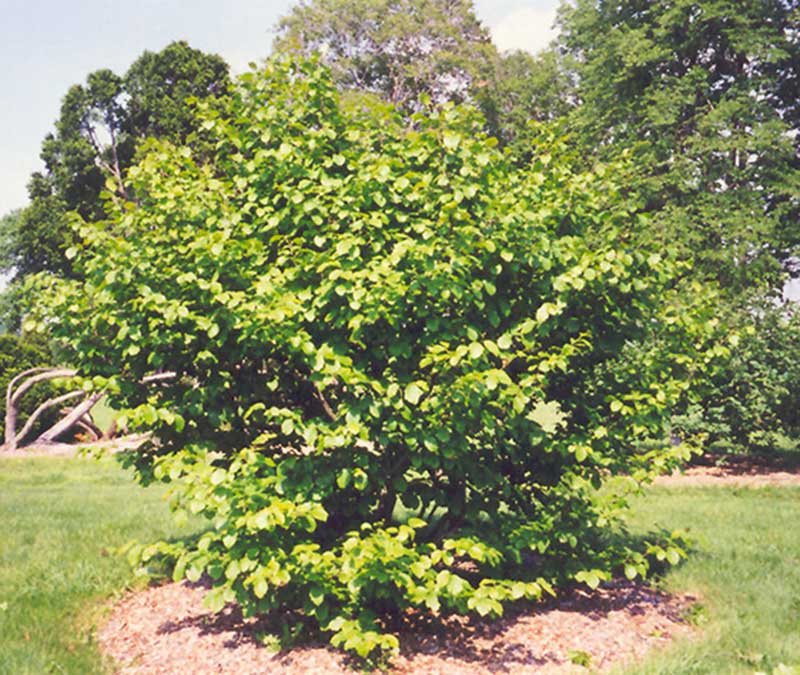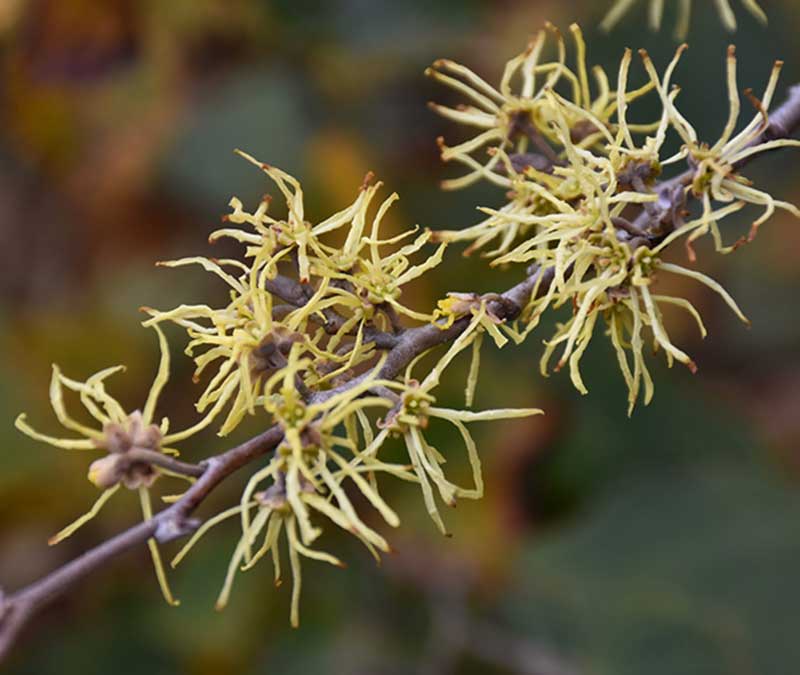A common question is, which plants thrive in shady locations? While some may believe that only sun-loving plants can flourish, we can assure you that there are numerous unique plants that do well in the shade. Whether you are seeking to establish a perennial garden or create privacy from neighbors, we have several options available. We have categorized some of the best shade-loving plants, perfect for your landscape!
Perennials
Lenten Rose
Lenten Rose, also known as Helleborus, are a shade loving semi-evergreen perennial. They come in a wide range of colorful flowers with dark green leaves. They can start blooming under the snow during Lent (where they get their name) and can continue to bloom well into summer. They can get to a foot tall and 3 feet wide.

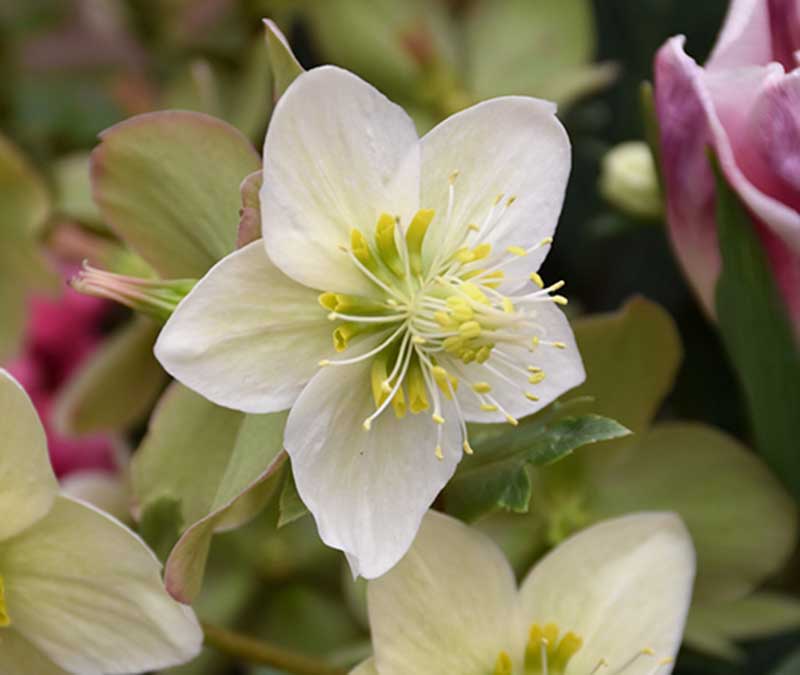
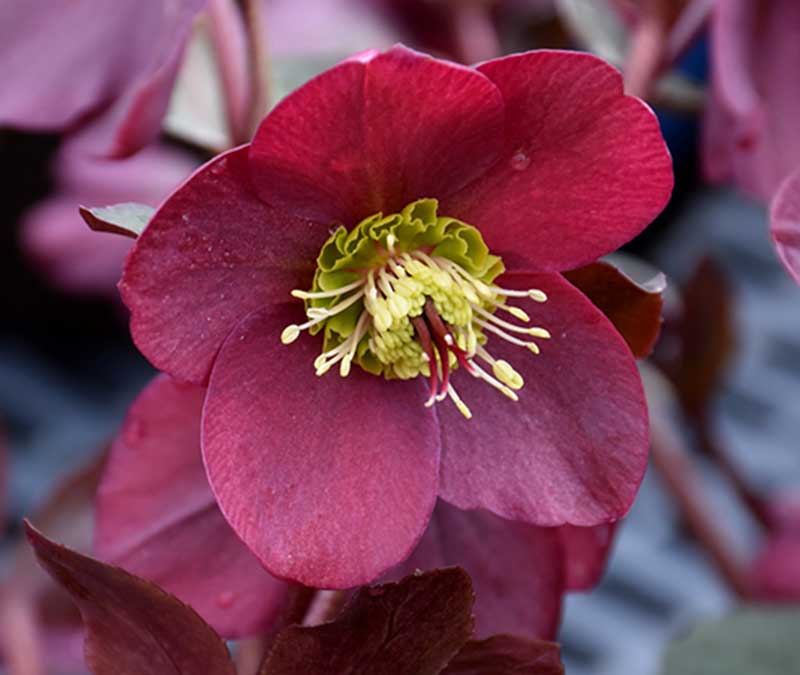
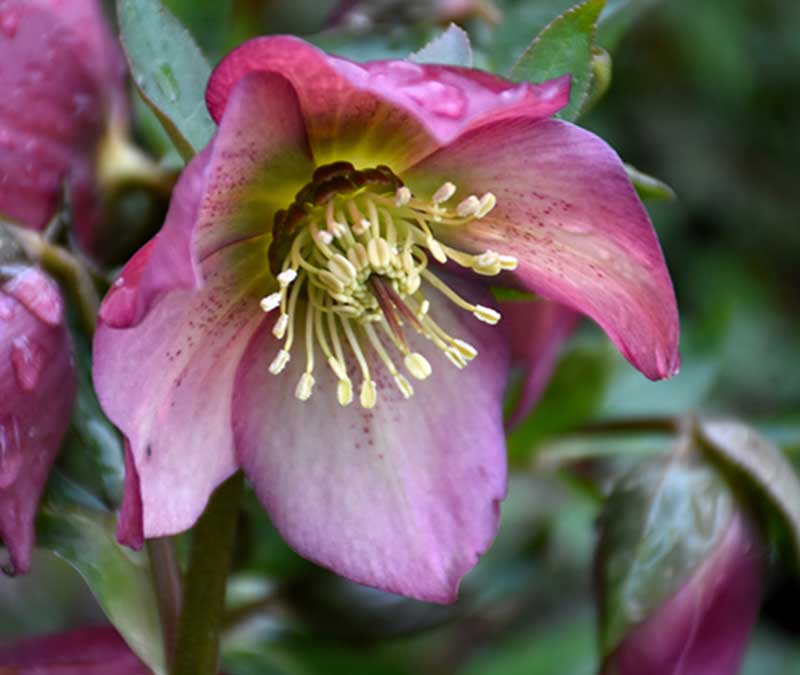
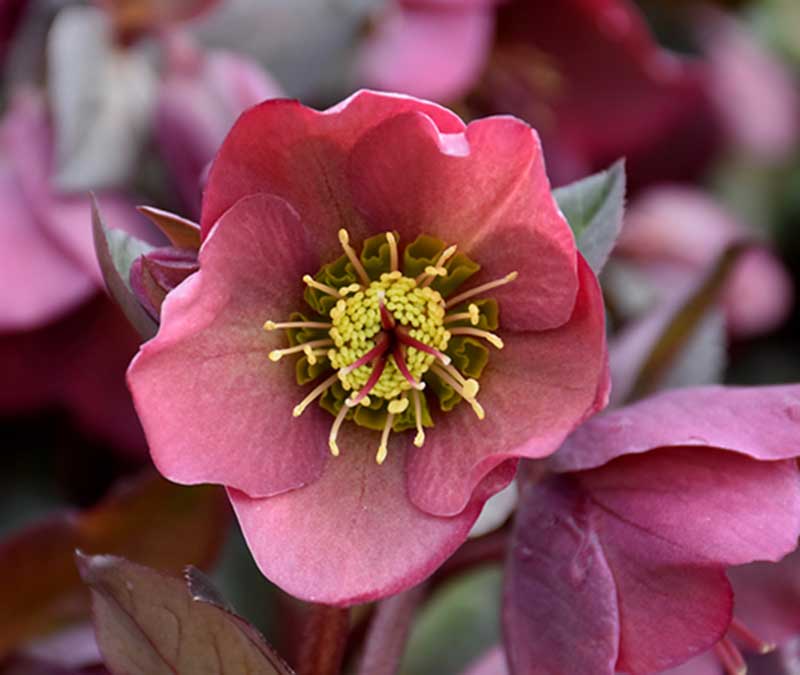
Hosta
Hostas are known as the friendship plant because everyone has them and they are a great gift to give. Hostas come in a variety of sizes and shapes. They can be as small as 2 inches tall to 3 feet tall and 5 feet wide. They come in a range of shades of green, from yellowish green to blue green. The leaves can be small and round to long and thin. Hostas do very well in shade to part sun.
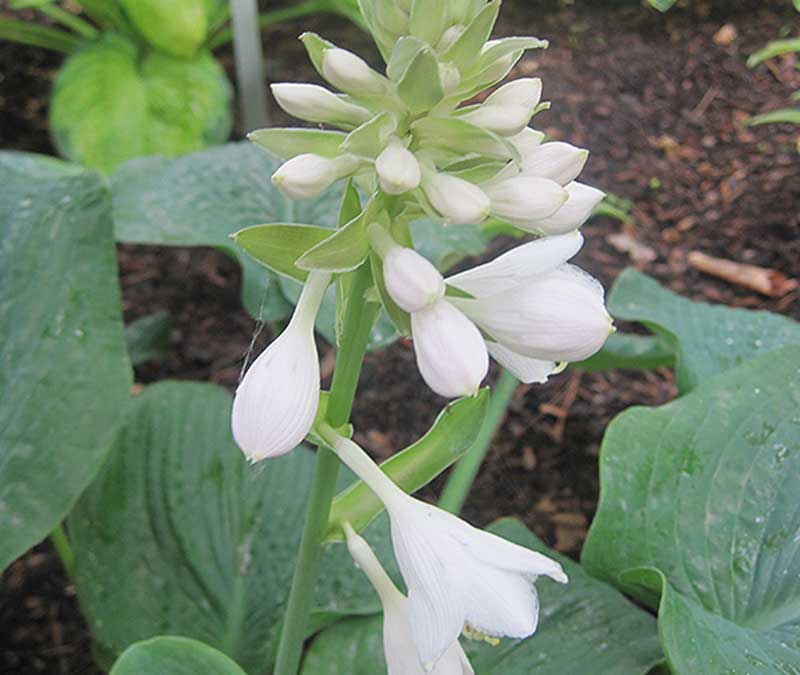
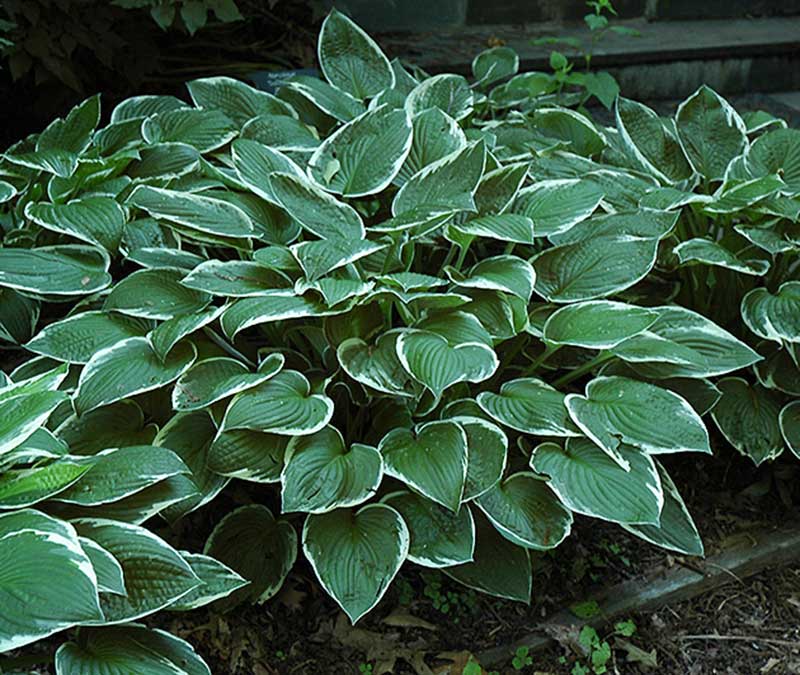
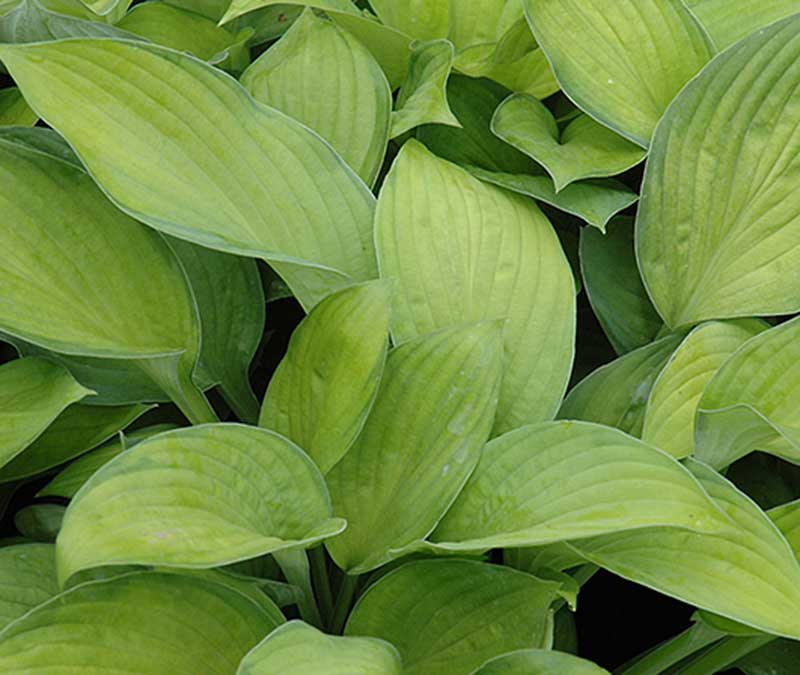
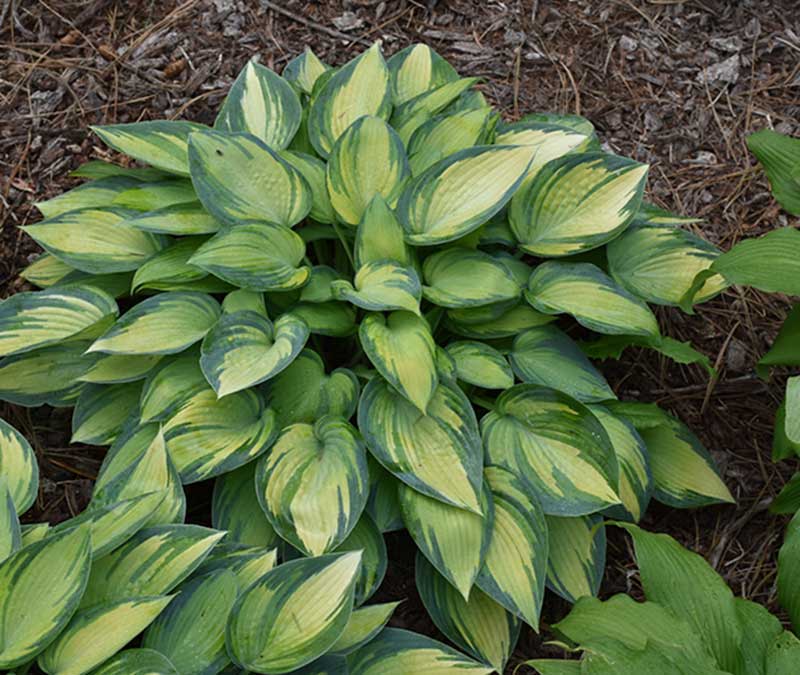
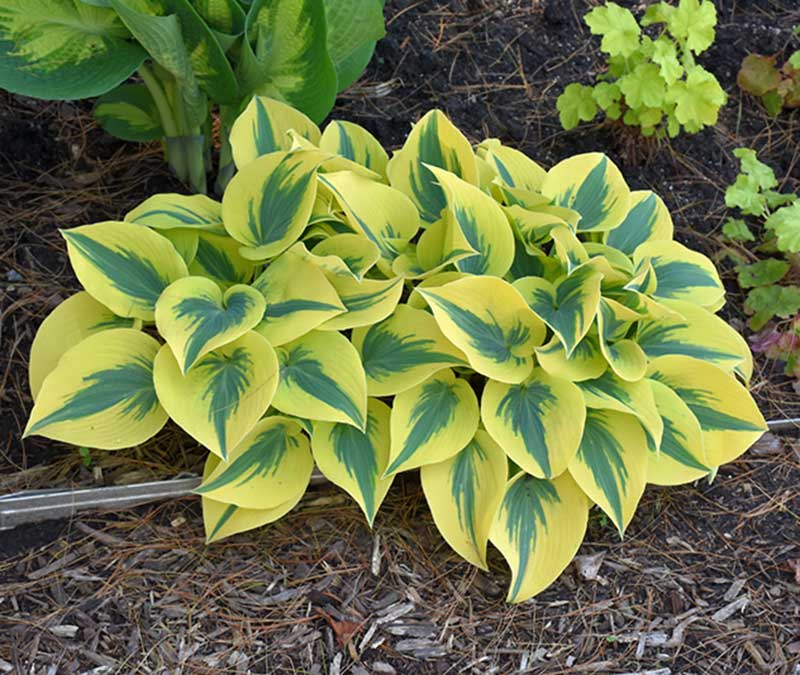
Coral Bell
There is a coral Bell for everyone. Another wonderful shade loving perennial that comes in a wide range of colors and shapes. They can be a chartreuse, green, red, pink, or purple in color. They can grow to around a foot and half tall and produce flower spikes with small pink or white bell-shaped flowers.
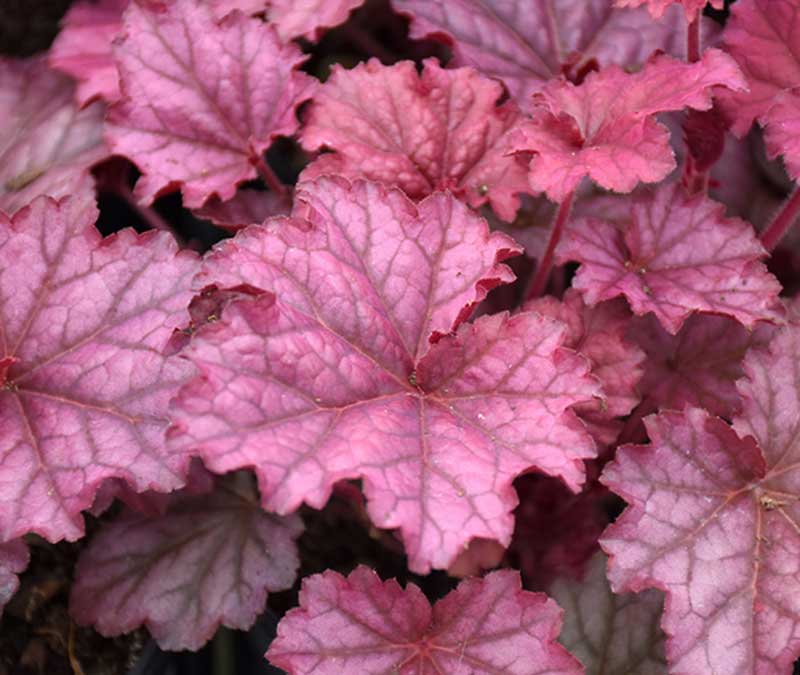
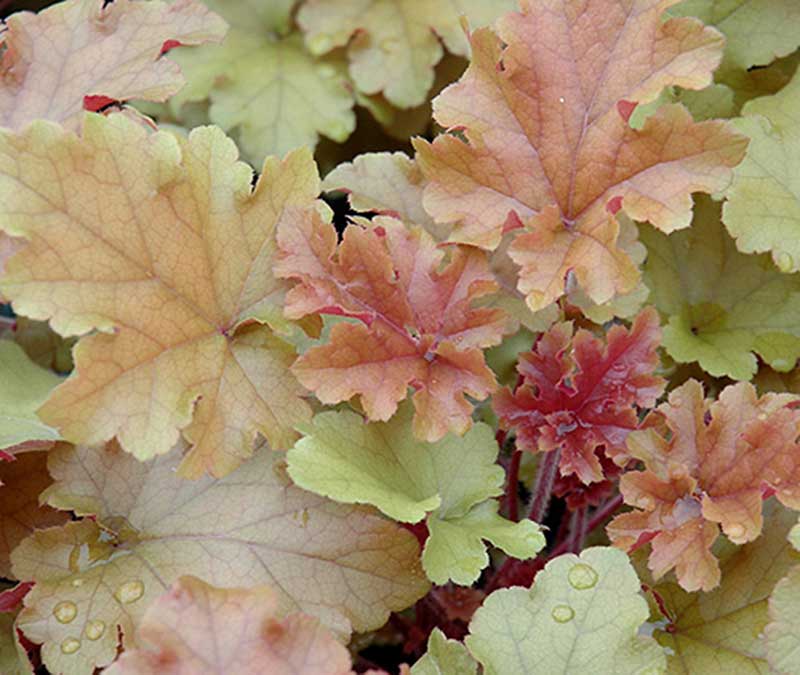
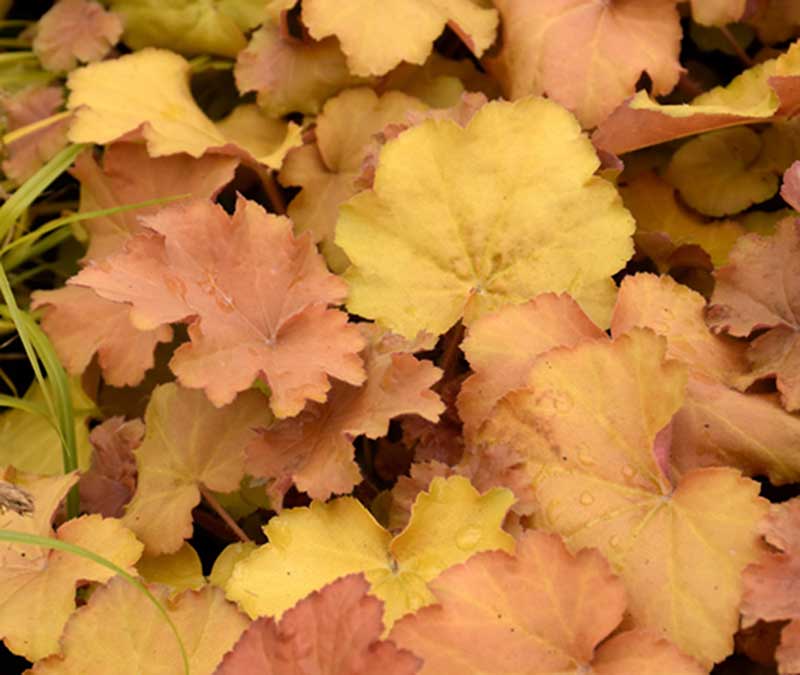
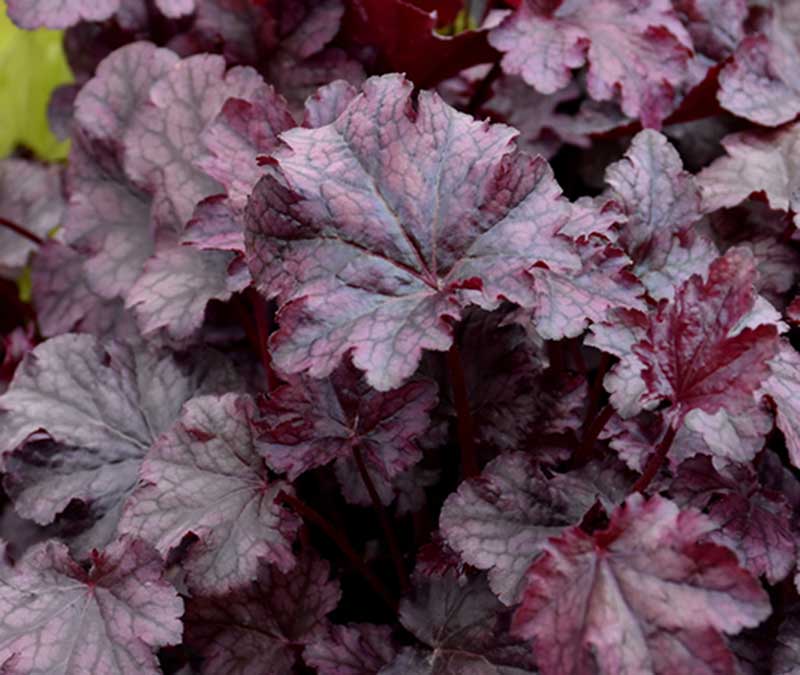
Brunnera
Brunnera is a wonderful perennial with heart shaped leaves. The leaves stay low to the ground, growing up to about one foot. The leaves are velvety in texture and are gray in color with dark green veins. A flower stem with rise above the leaves producing small blue flowers.
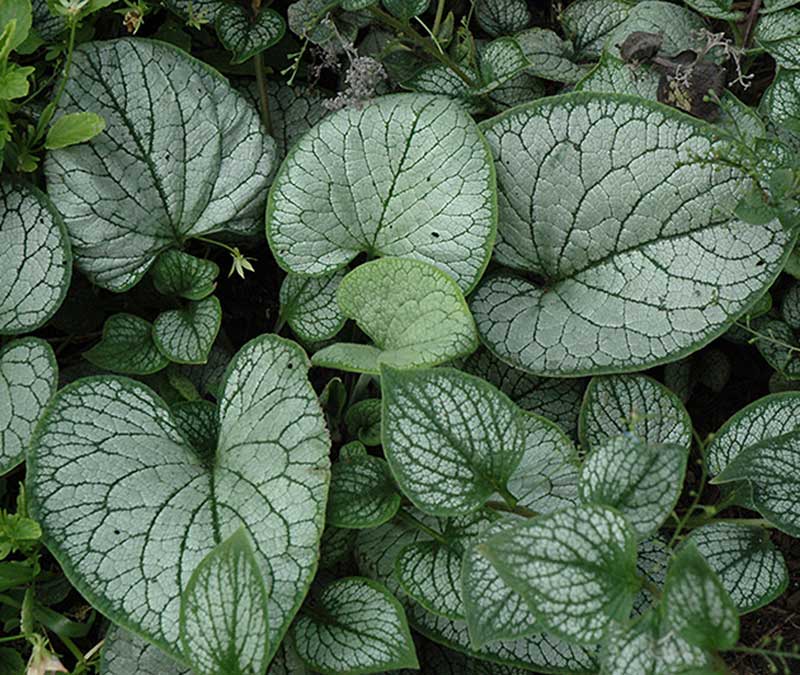
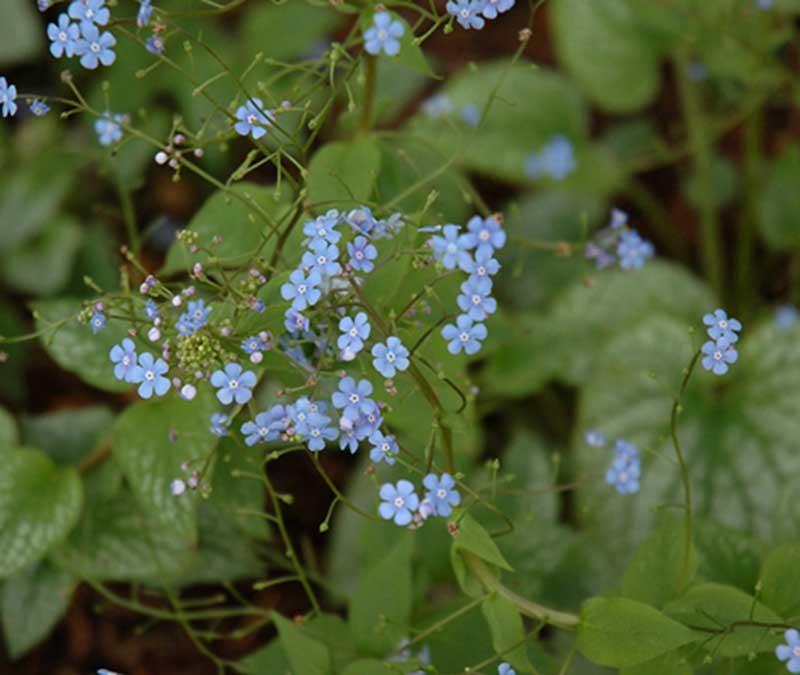
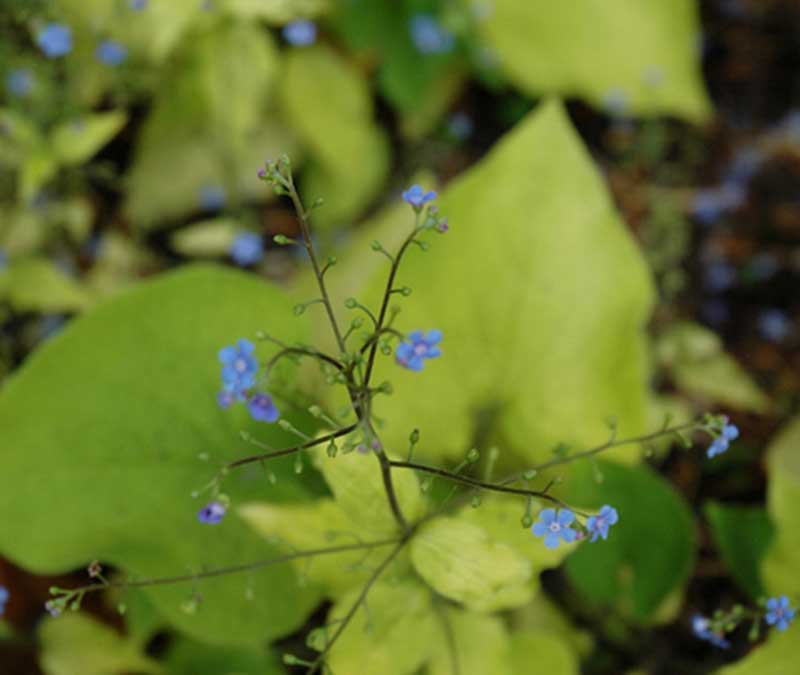
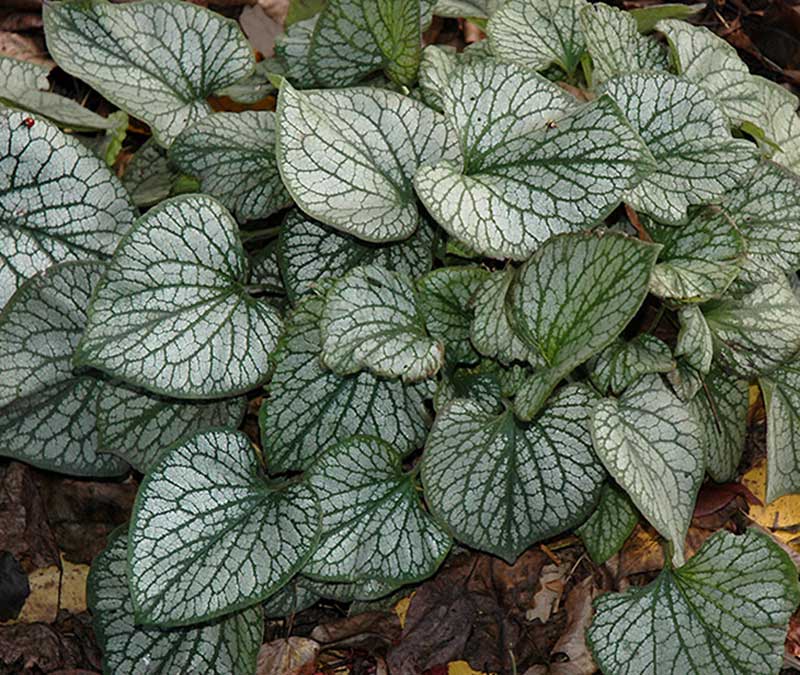
Lady’s Mantle
Another perennial with a velvet feeling lobed leaf. The leaves are a light green and produce a yellow flower spike that reaches a foot and a half high.


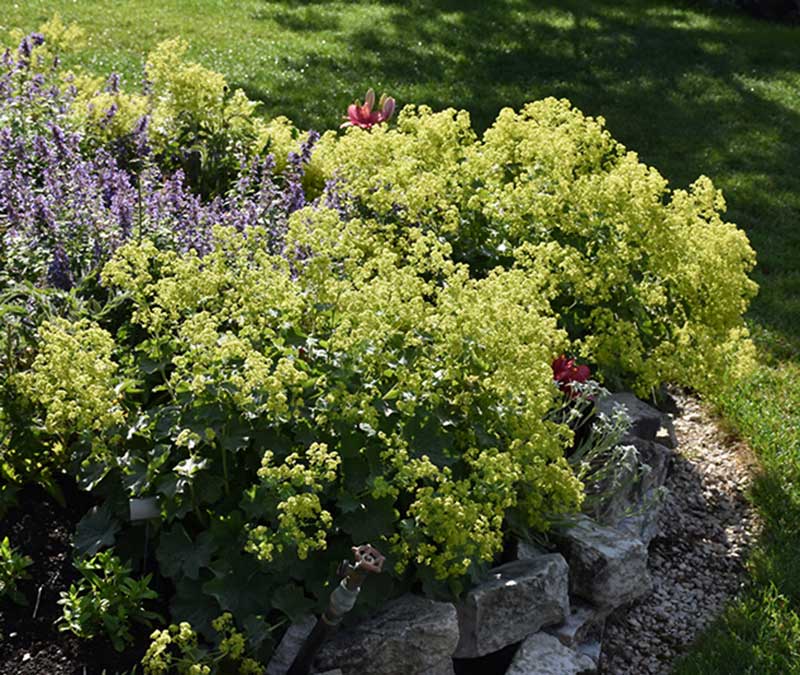
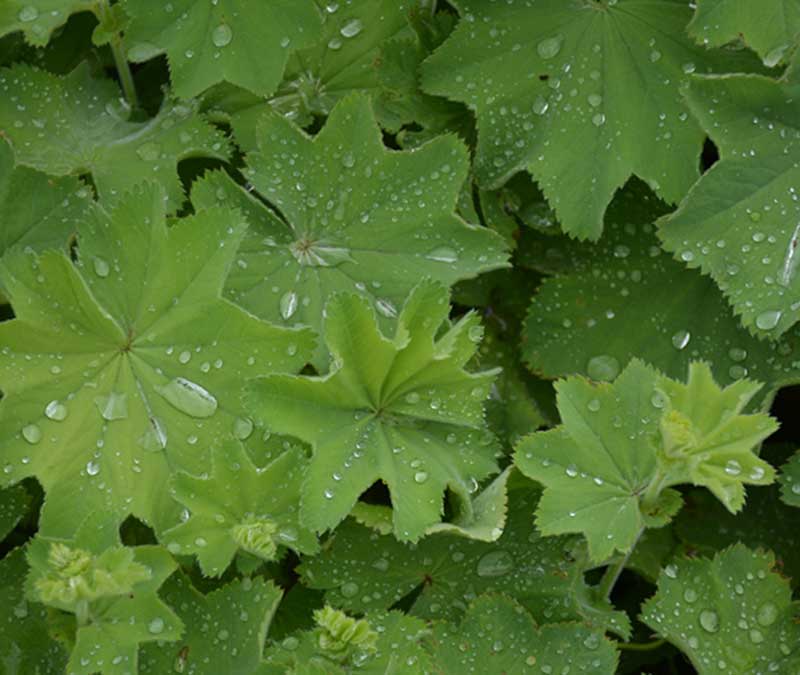
Flowering Shrubs
Forsythia
Forsythia are one of the first plants to flower in the spring usually the end of March beginning of April. They produce yellow flowers on the stems. They come in a few varieties. Some that stay smaller, around 2’ by 2’ and larger varieties that become 8’ by 8’.
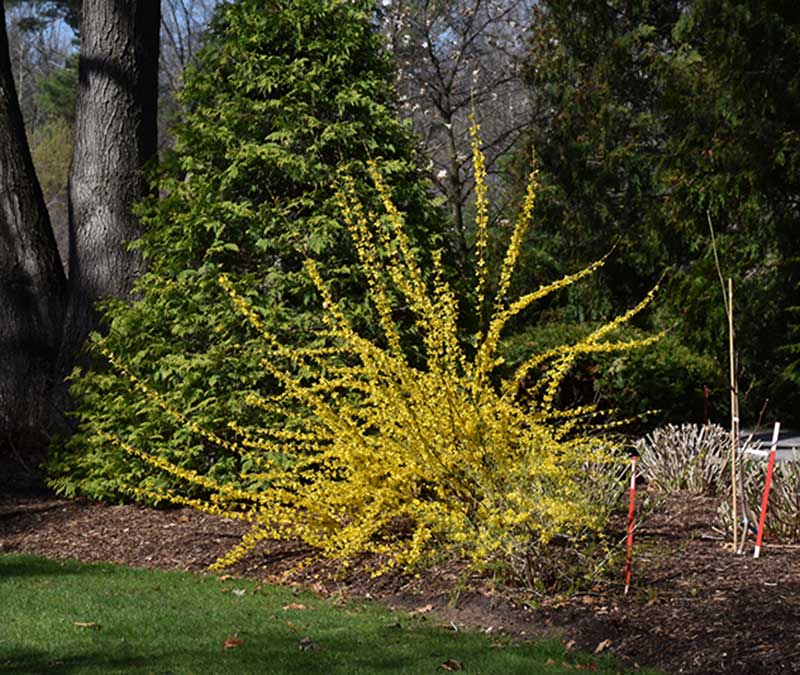


Viburnum
Viburnums come in many different sizes and shapes. Most of them produce white flowers in the spring with some producing pink flowers. Viburnum work well to naturalize an area and can provide screening during the summer months. Certain Viburnums can grow to 5’ by 5’ and some can reach heights of 12’ and widths of 12’. Some viburnums have very fragrant flowers and others will hang on to their leaves late into the fall.
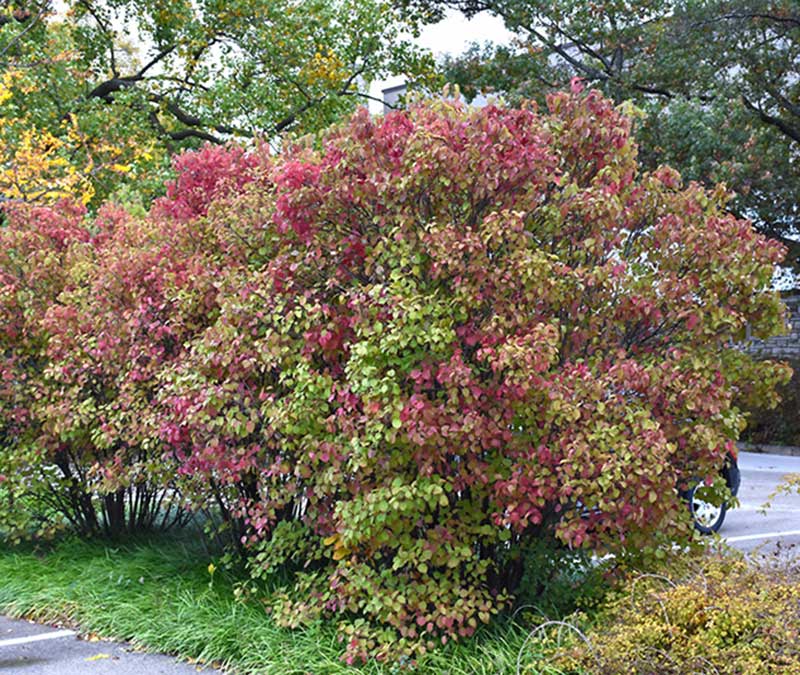


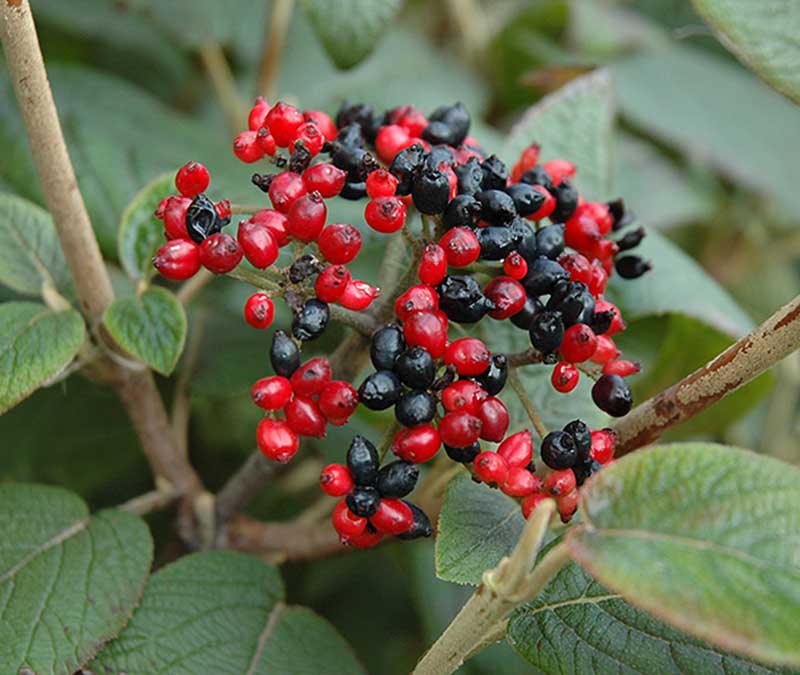
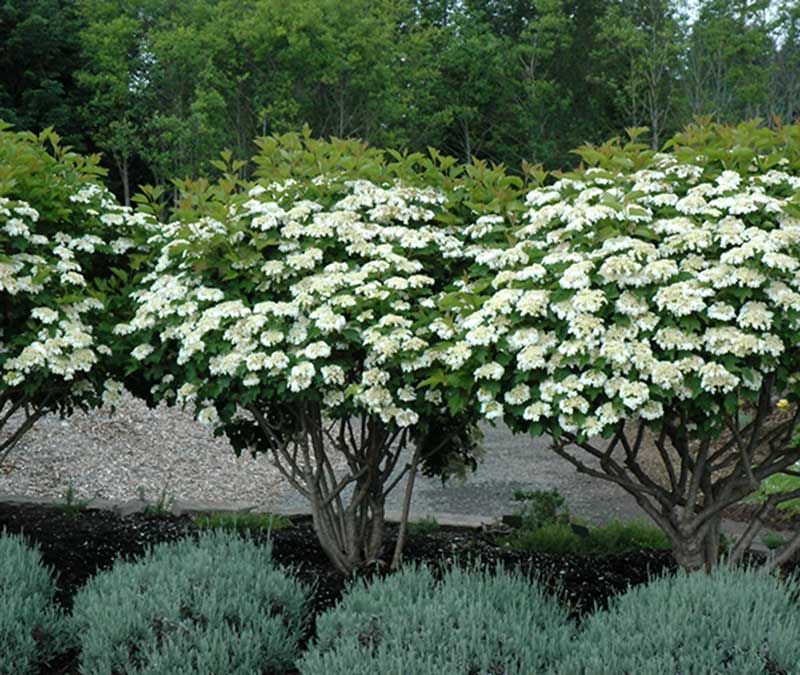
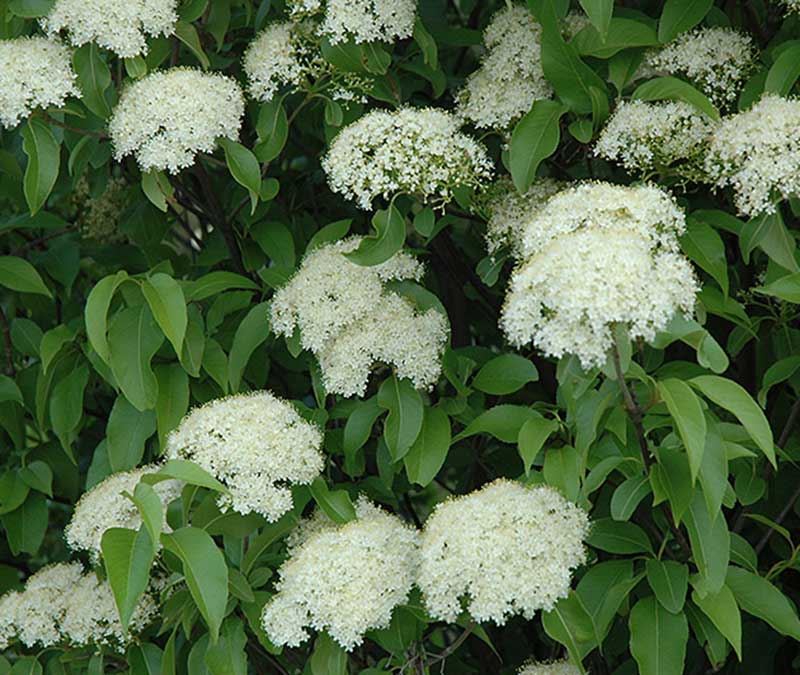
Itea
Itea is a flowering shrub that will grow to 3’ to 5’ tall and wide. Itea will produce clusters of white lightly fragrant flowers on a 6” long stem. Dark green leaves will change to yellow, orange, reddish purple, and crimson in the fall.
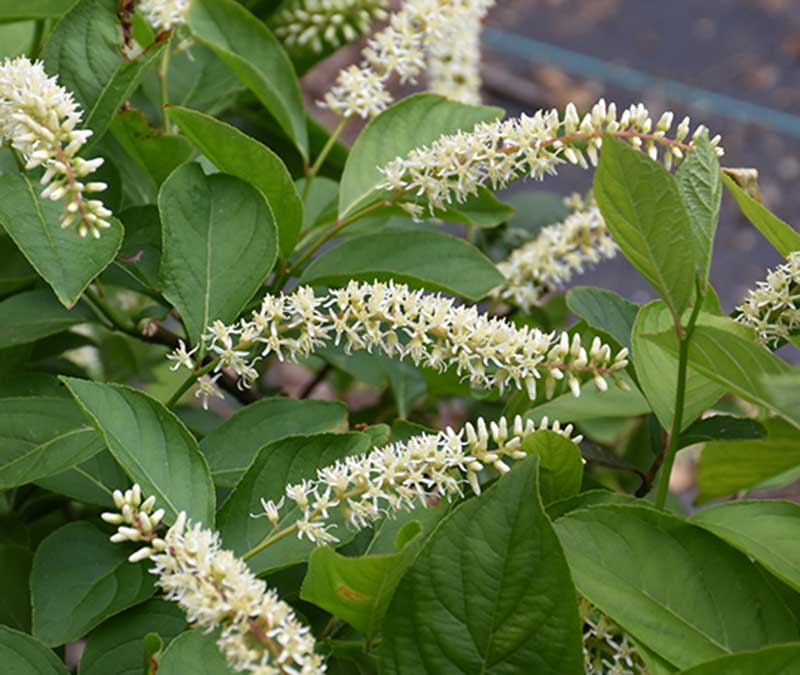
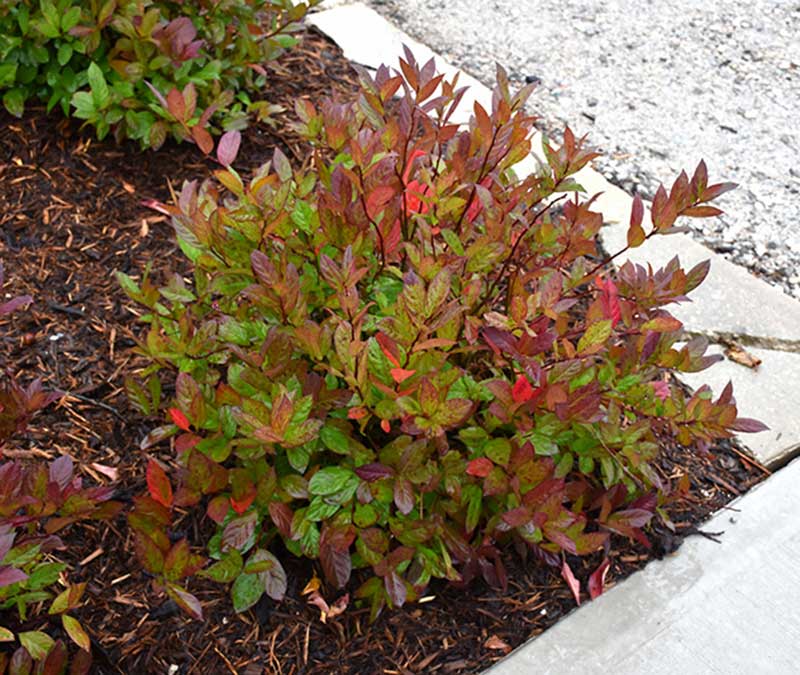
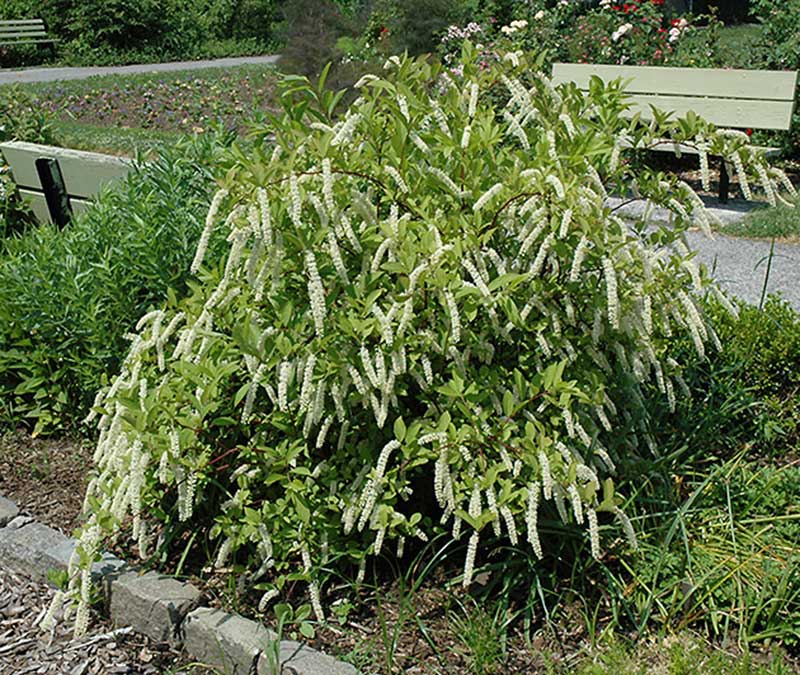
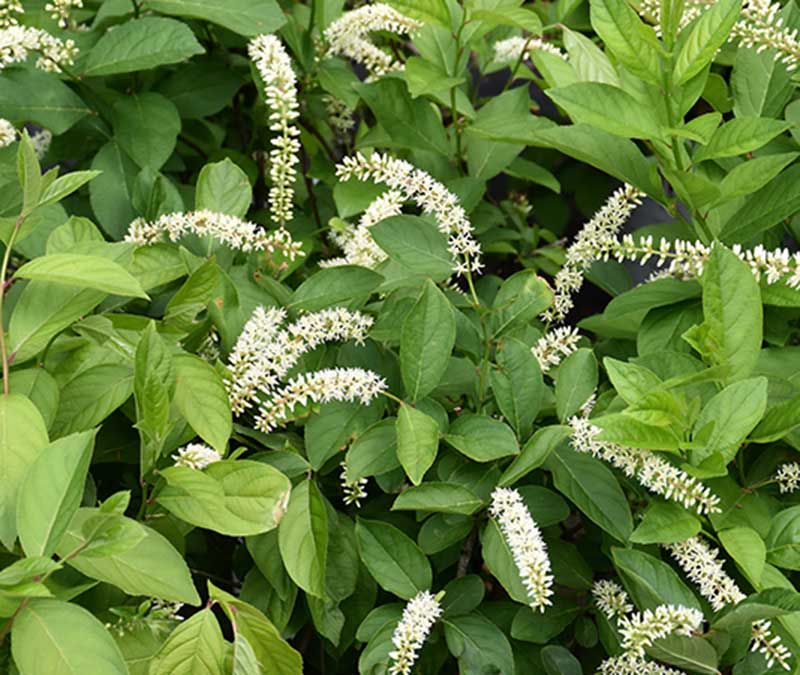
Oakleaf Hydrangea
Many hydrangeas will do well in shade, but the Oakleaf Hydrangea is the one that does the best. It gets its name from the oak like leaves that appear in the spring. It can produce white cone shaped flowers in the midsummer that will last through the fall. Oakleaf Hydrangeas can range in size from 3’ by 3’ to 6’ by 4’.
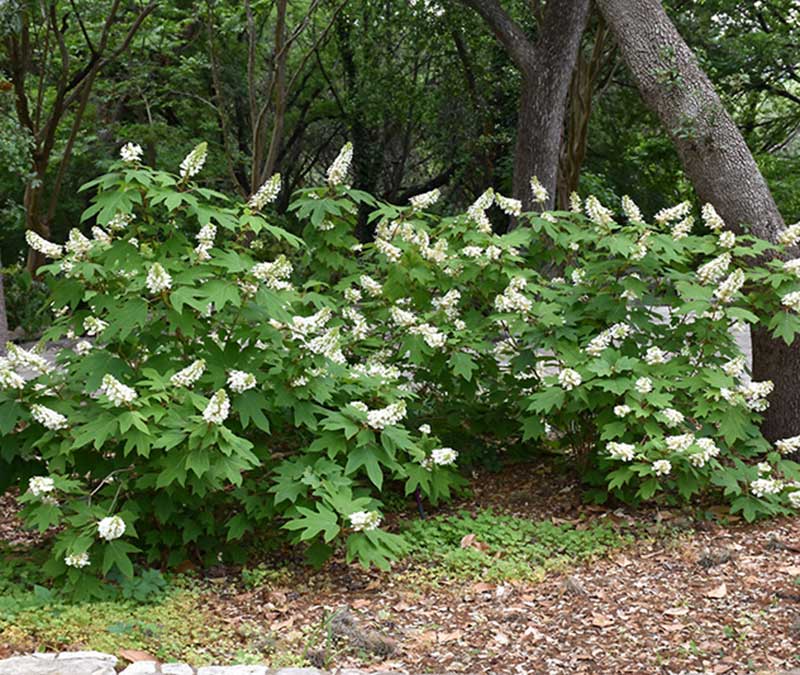
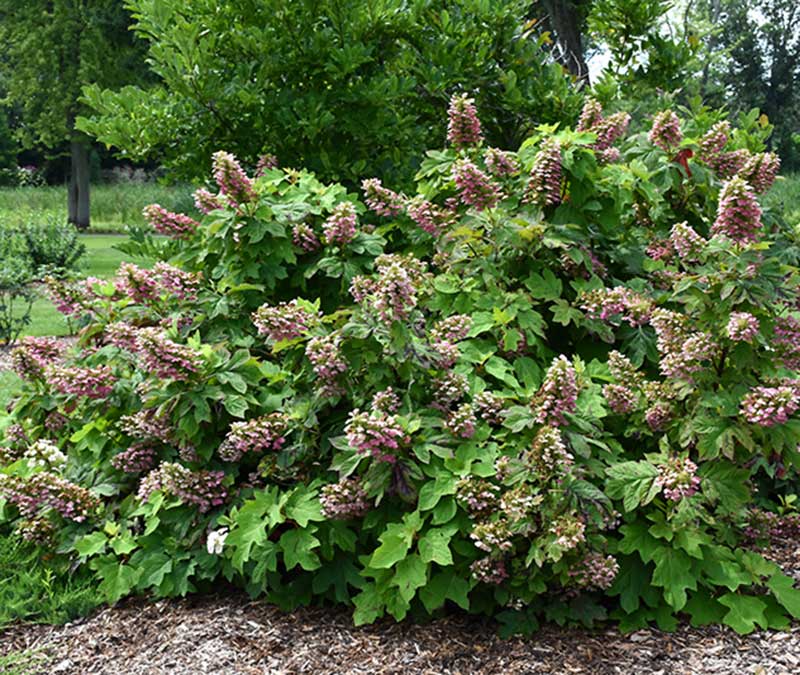
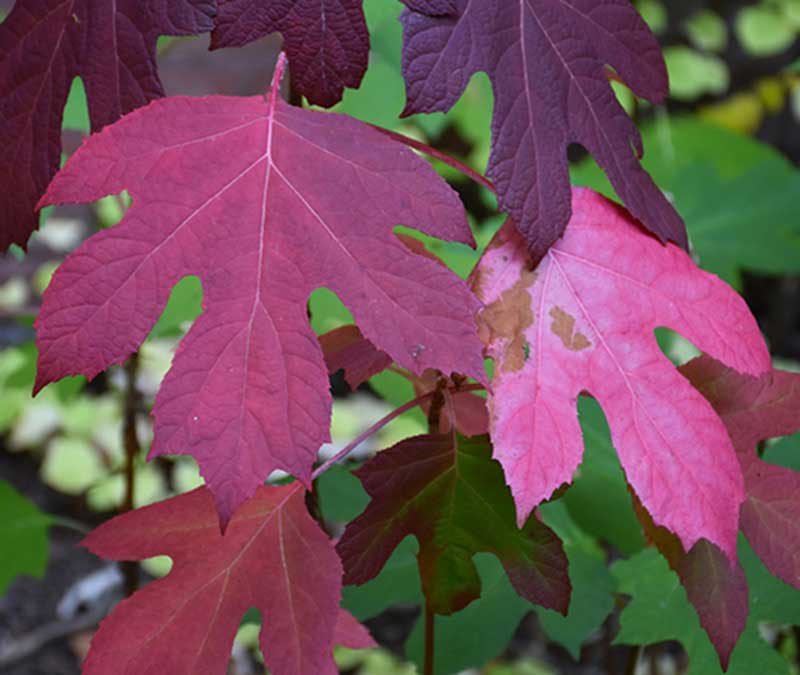
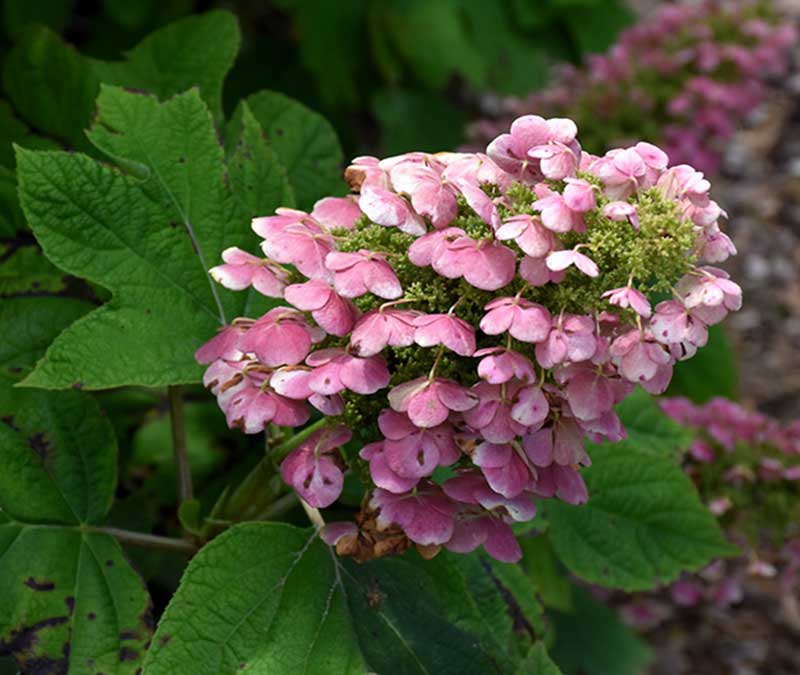
Kerria
Kerria have a dense habit with upright-arching branches. They produce a wonderful display of yellow flowers in early spring and sporadically flower throughout the summer. Kerria can reach heights of 6’ and can spread up to 6’.
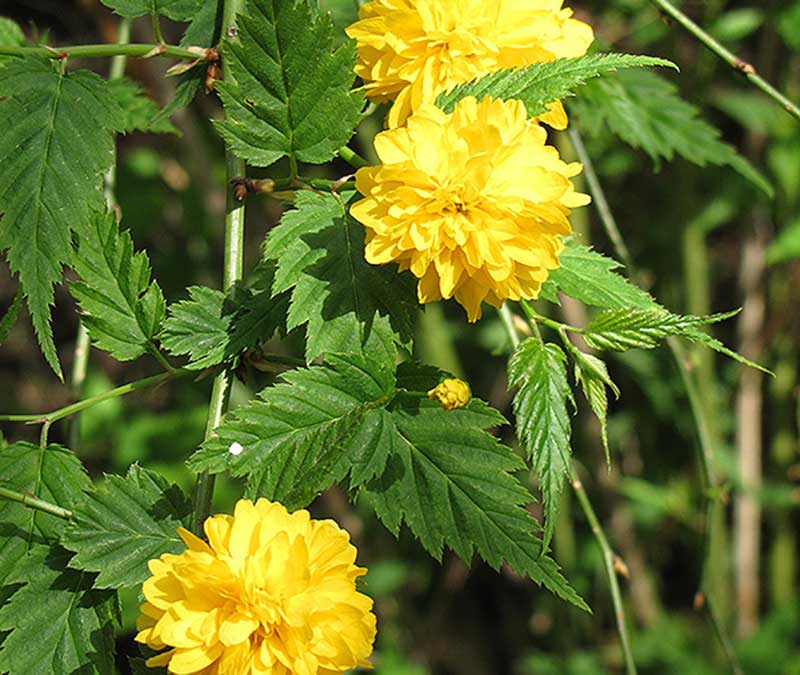
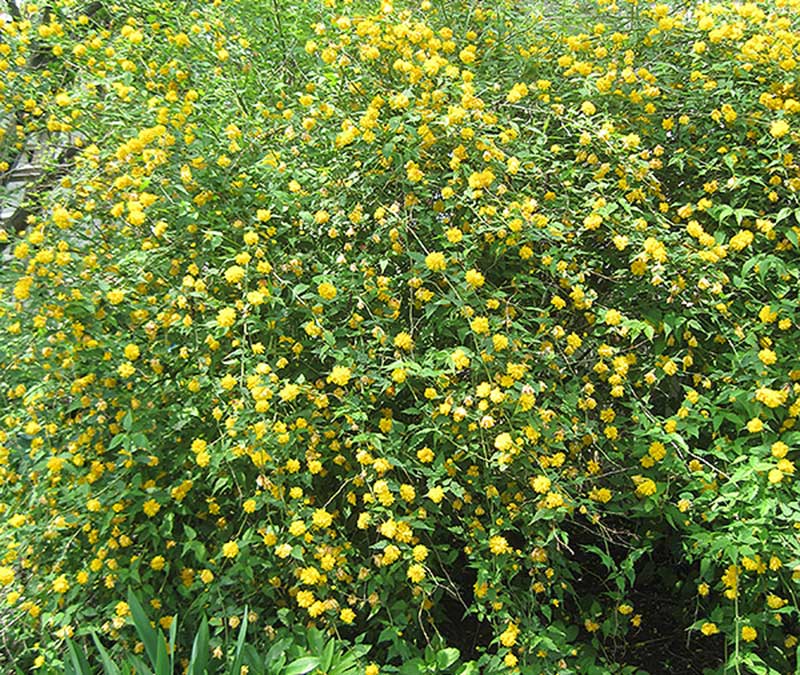
Evergreens
Pieris
Pieris are a slow growing evergreen with bright red new growth that matures to glossy green. Before the new growth happens, white flower spread across the outer edge of the plant. Pieris can get to 6’ tall and wide.
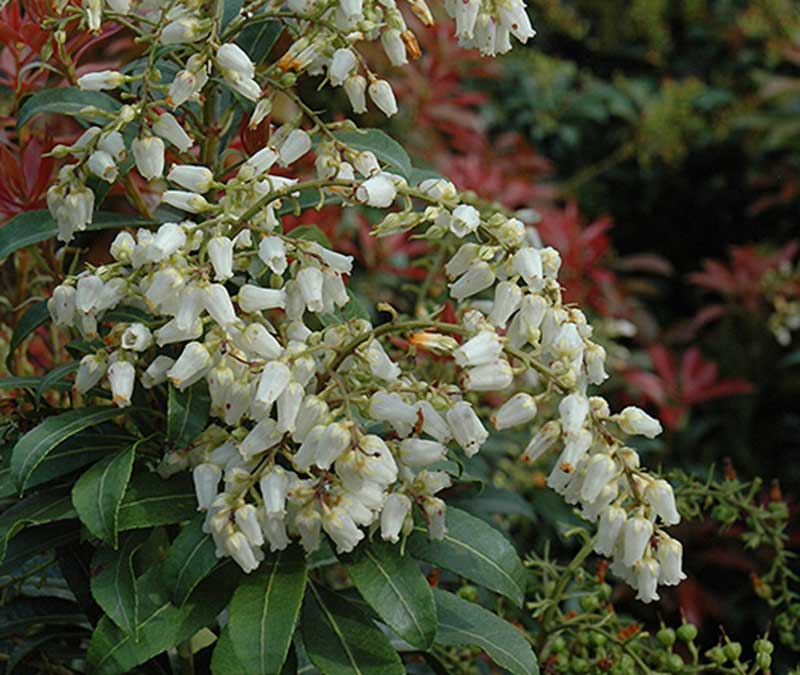
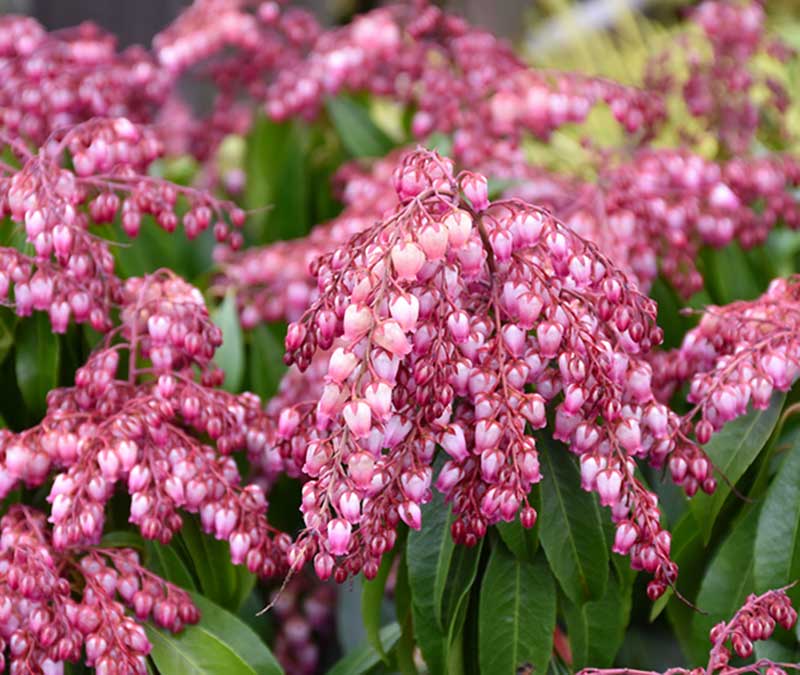
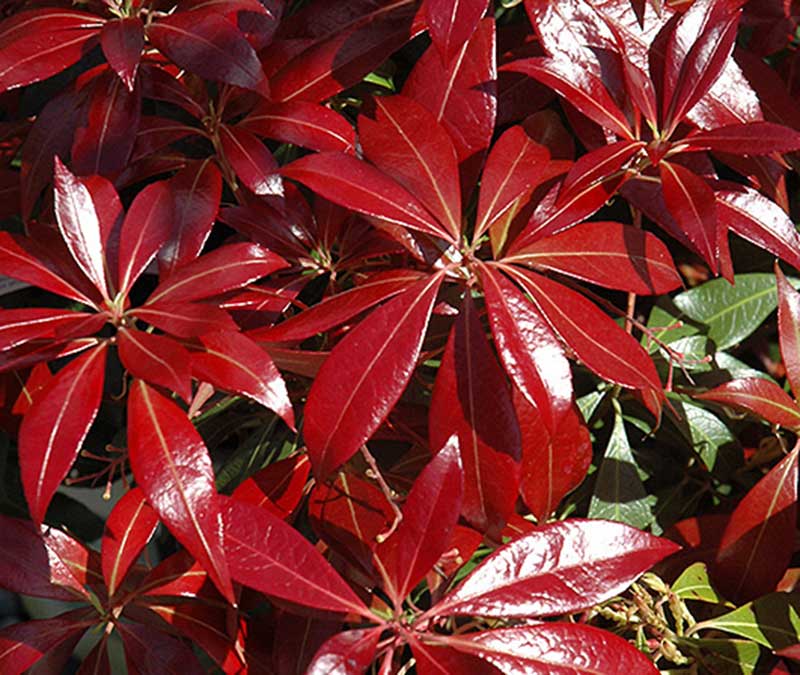
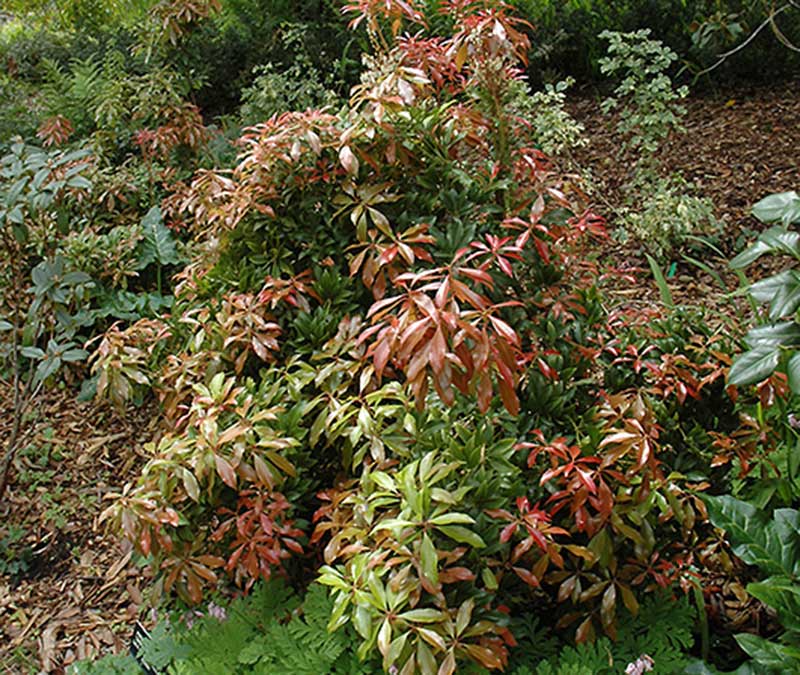
Rhododendron
Rhododendron have spring flowers that are in clusters. They come in many colors from red, pink, purple, orange, white and yellow. They range in size from 4’ by 4’ to 8’ by 8’. They grow well in dry acidic areas.
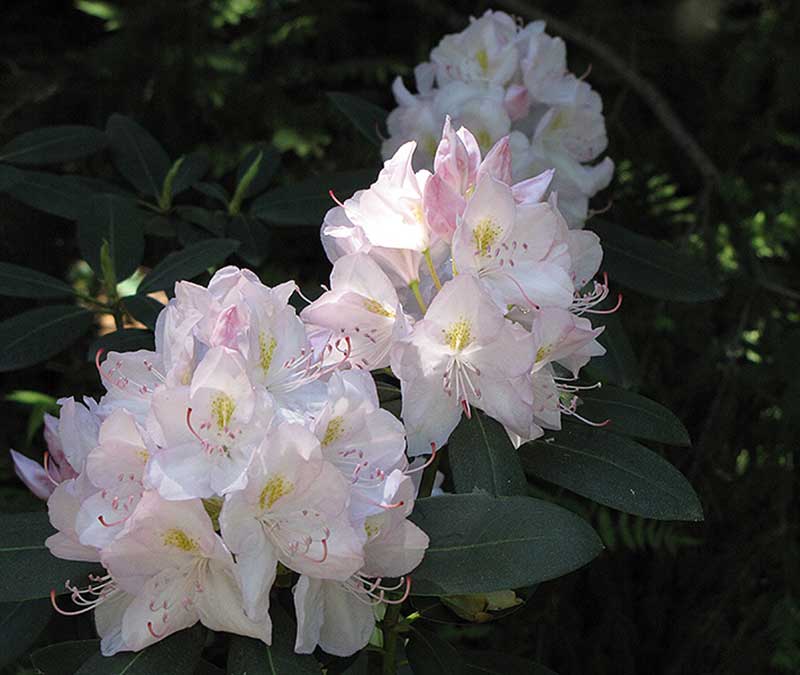


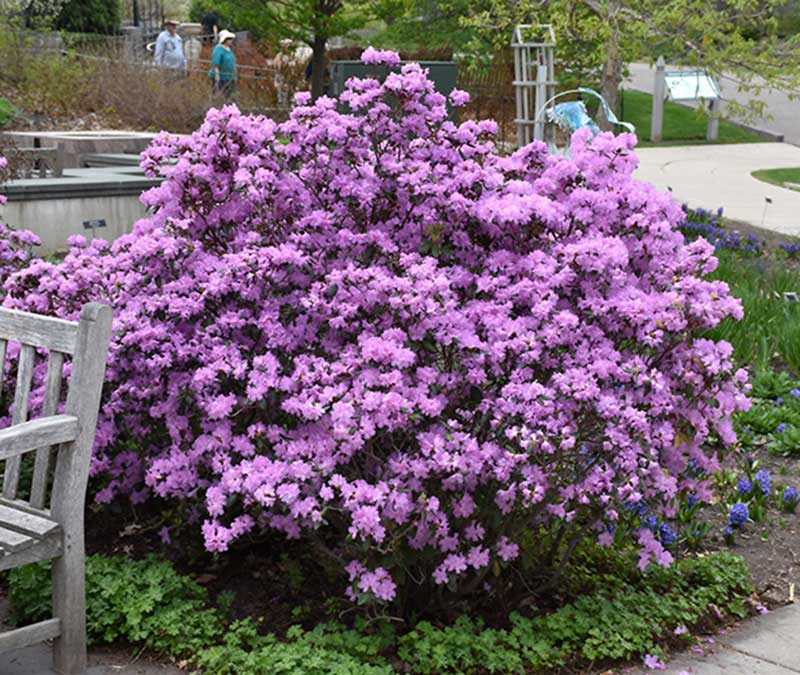
Holly
Holly are great four season plants. They start in the spring with clusters of white flowers around the stems. The bright green new growth will mature to a blue green color. The flowers will transition into bright red berries that stay on the plant until the next spring. The contrast with the blue green leaves, red berries and white snow in wither is stunning. Holly can reach 6’ tall and 6’ wide.

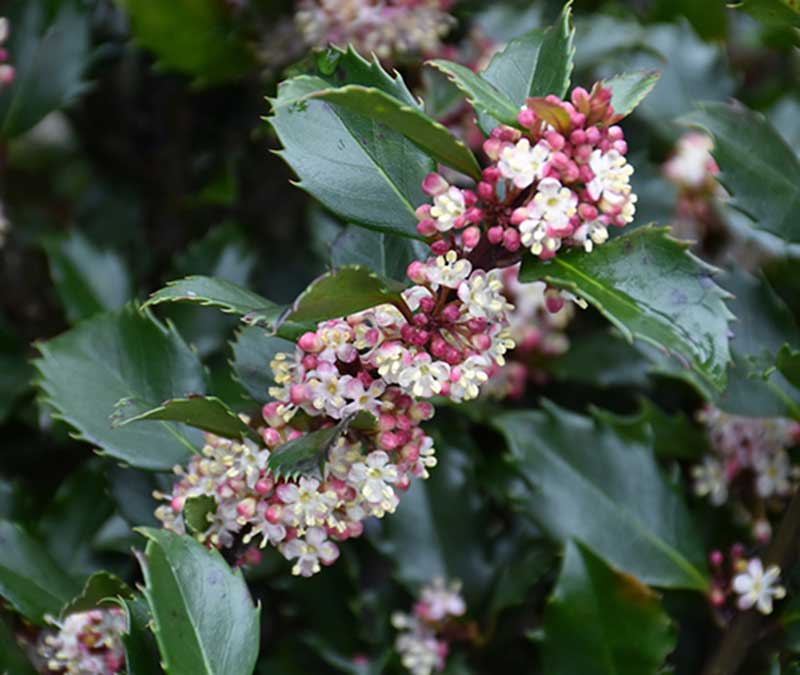
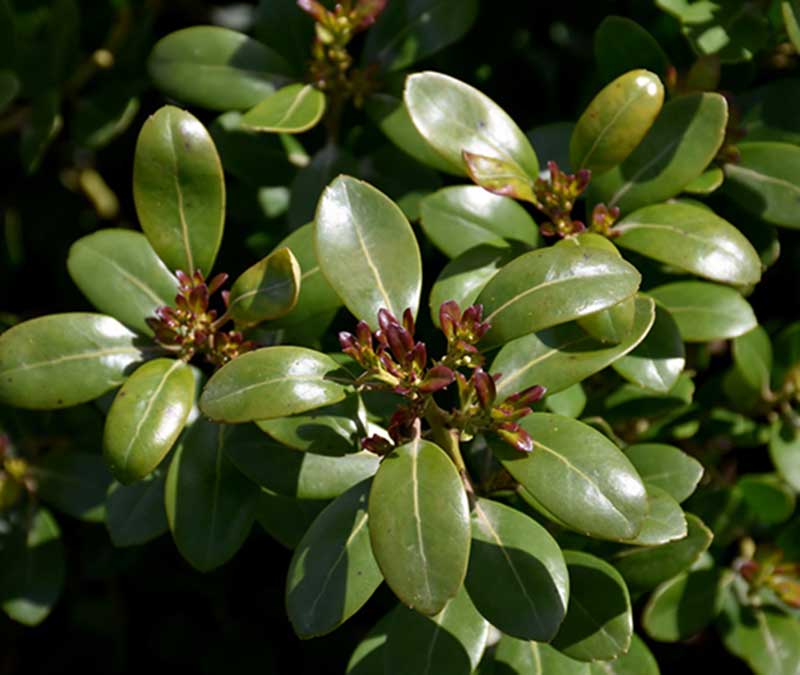
Yew
Yews are a simple evergreen with dark green soft needles. Yews can produce red berries during the summer. They can range in sizes depending on the variety.

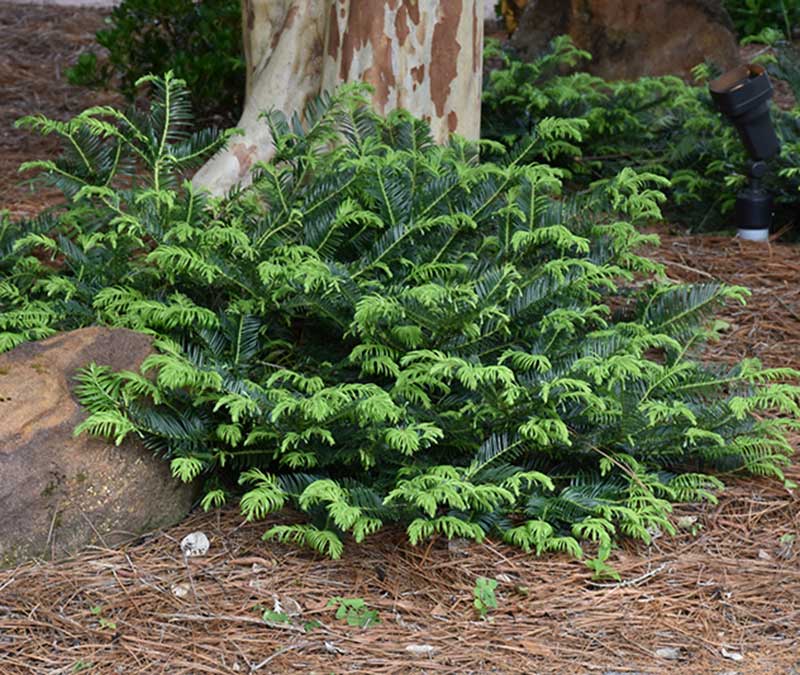
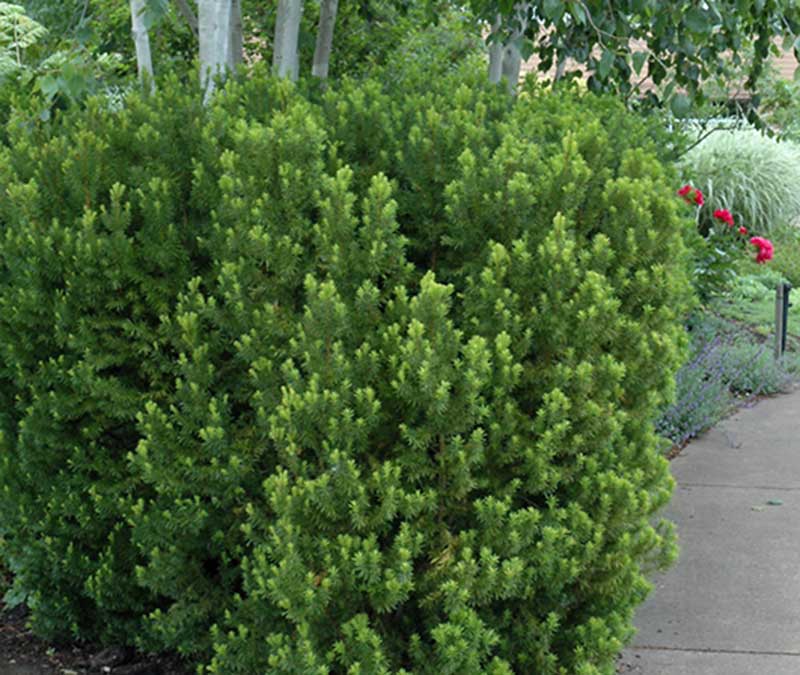
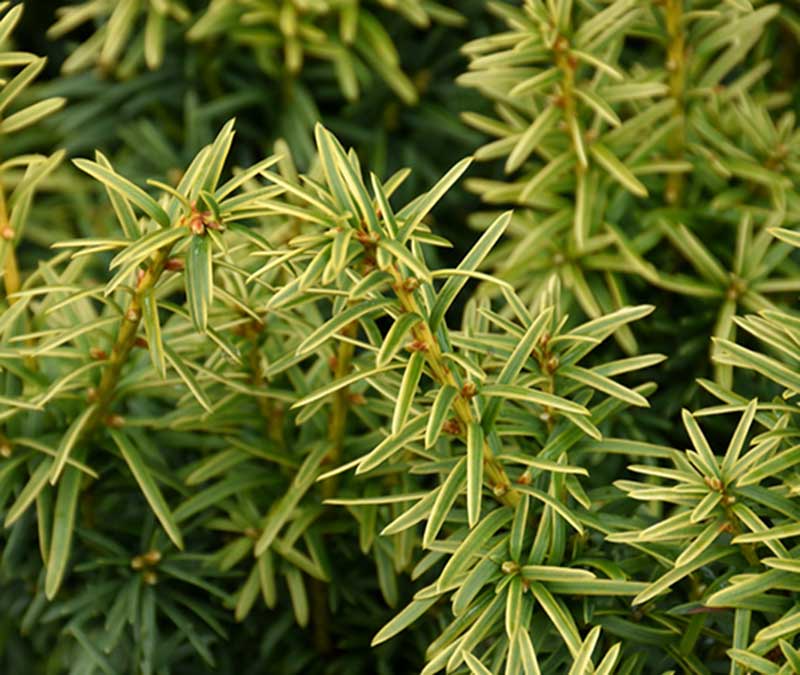
Russian Cypress
Russian Cypress are a good shade loving ground cover evergreen. They can get 8” tall and spread to 12’. Russian Cypress have a feathery appearance with dark green foliage that turns purple in the fall.
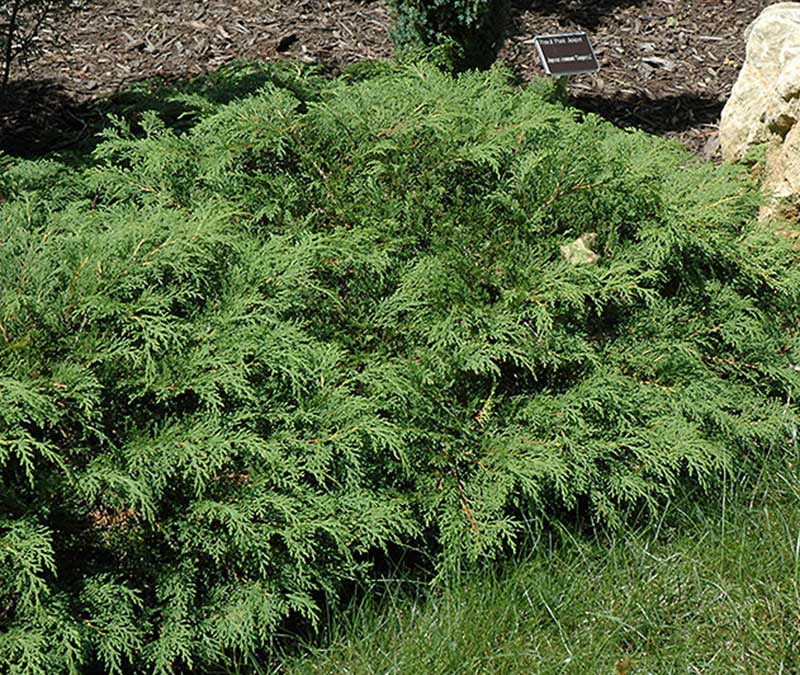
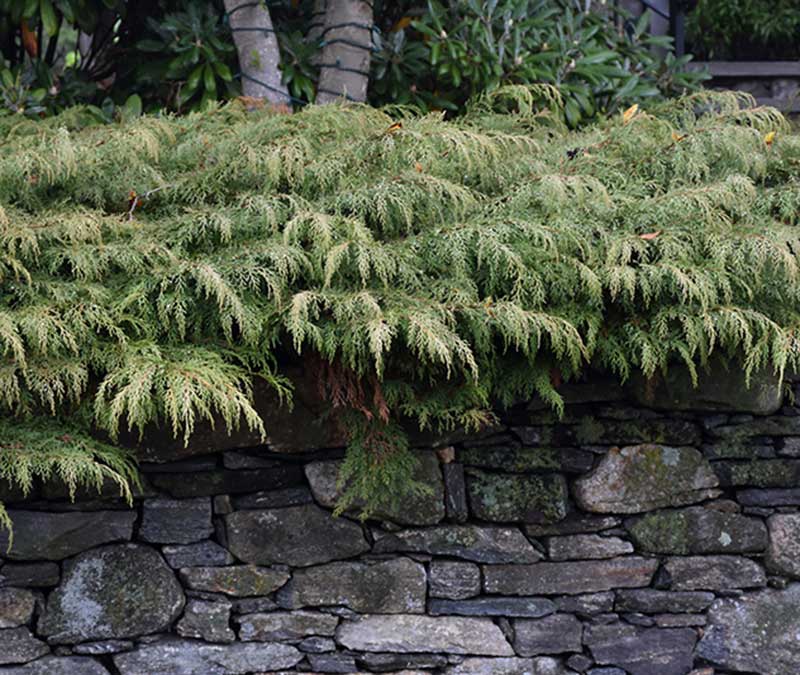
Arborvitae
Arborvitae come in a wide range of sizes and colors. They can be green or yellow and can be short and round in size to tall and skinny.

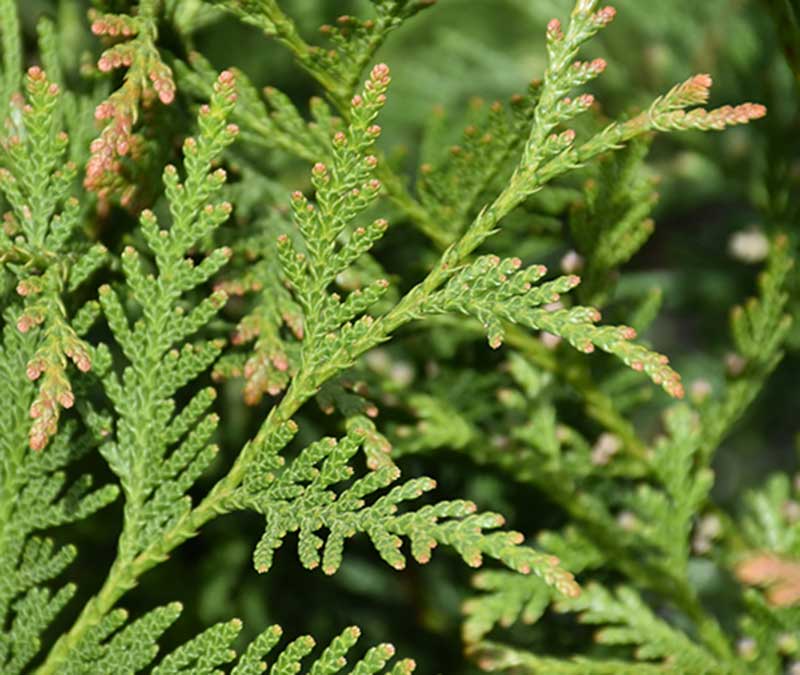
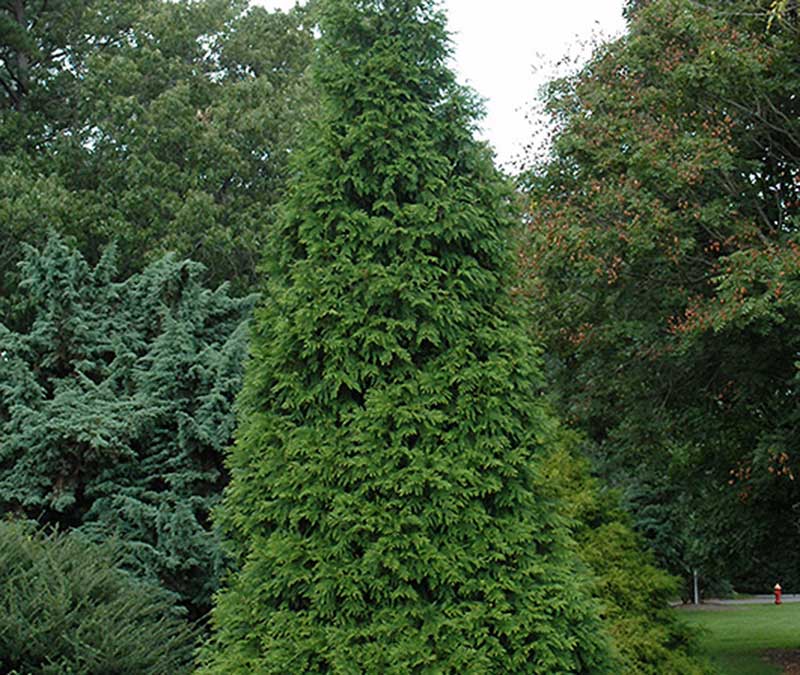
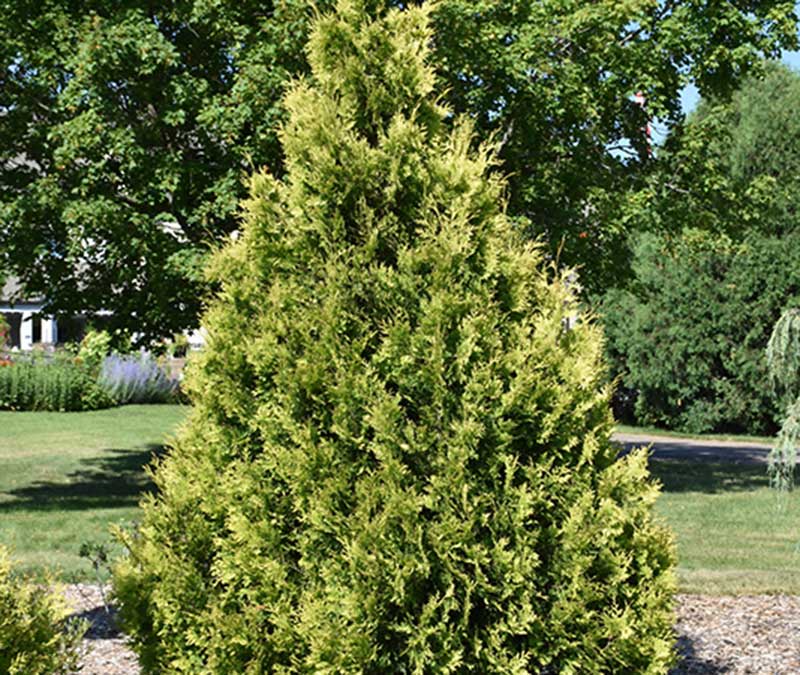
Flowering Trees
Redbud
Redbuds are a great spring flowering tree with heart shaped leaves. They come in a few varieties, some with green leaves, purple leaves, and yellow leaves. They vary in size from 8’ tall and 5’ wide to 25’ tall and 30’ wide. They produce purple flowers in the early spring on zig zag branches. Usually turning yellow or orange in the fall.


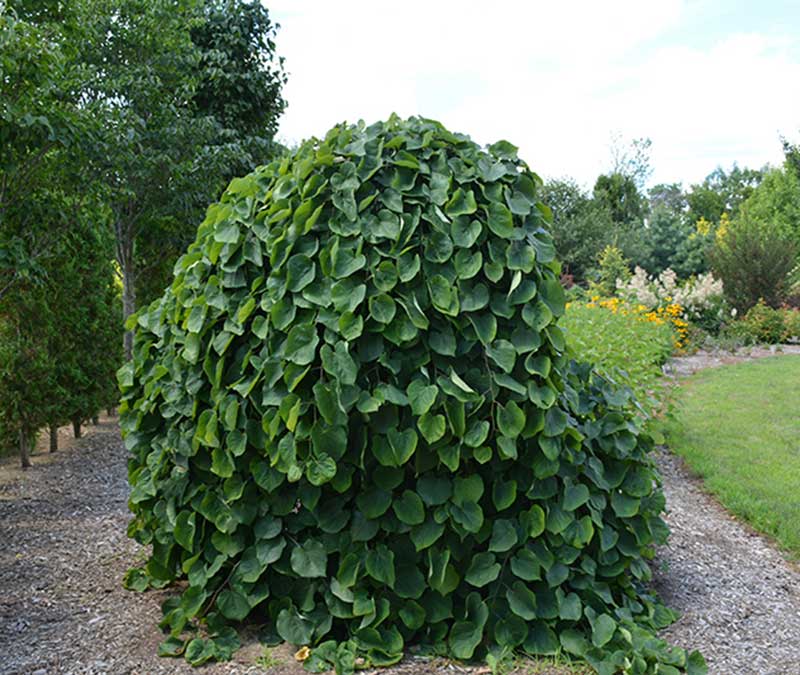
Dogwood
Dogwoods are also a spring blooming flowering tree or shrub. The shrubs have red or yellow stems with white flowers and green leaves. The trees can vary in size with white, pink, or red flowers. The leaves can be simple green or can be variegated with white and green or yellow and green. Most turn beautiful fall colors.
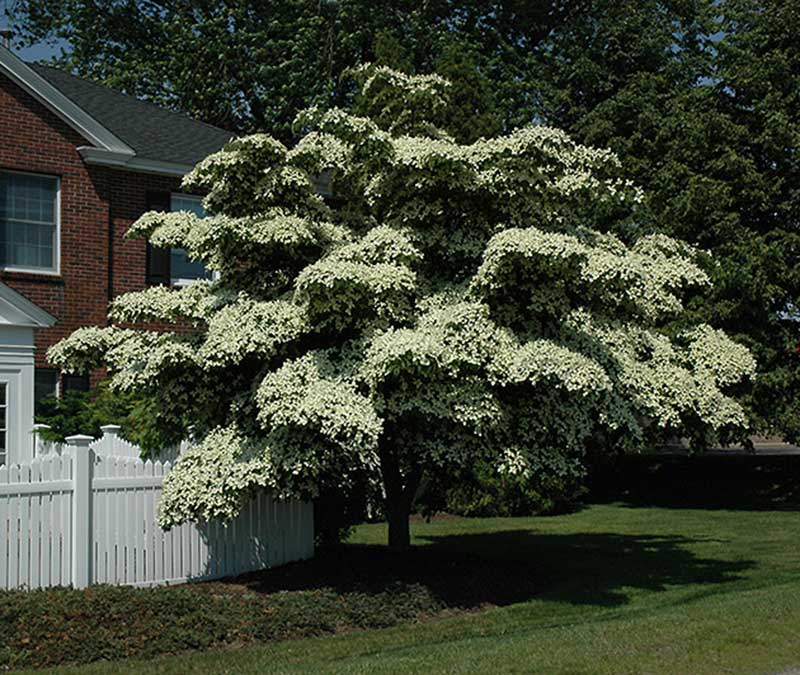
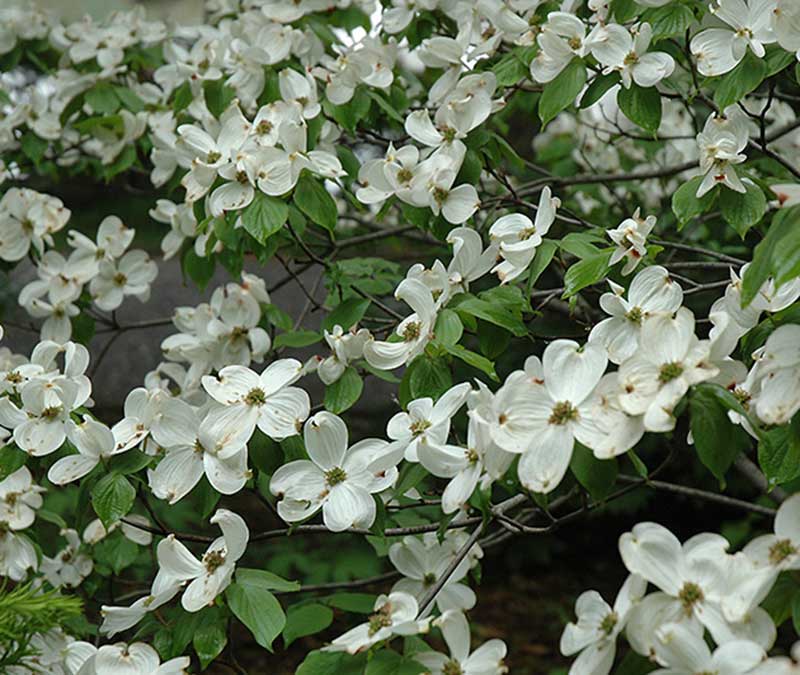
Serviceberry
Serviceberry can be a single stem tree or multi-stem. They produce whispy white flowers in the spring that change into reddish purple edible berries. They can get to 25’ tall and 15’ wide and have smooth gray bark. They leaves turn brilliant shades of red, orange, and yellow in the fall.
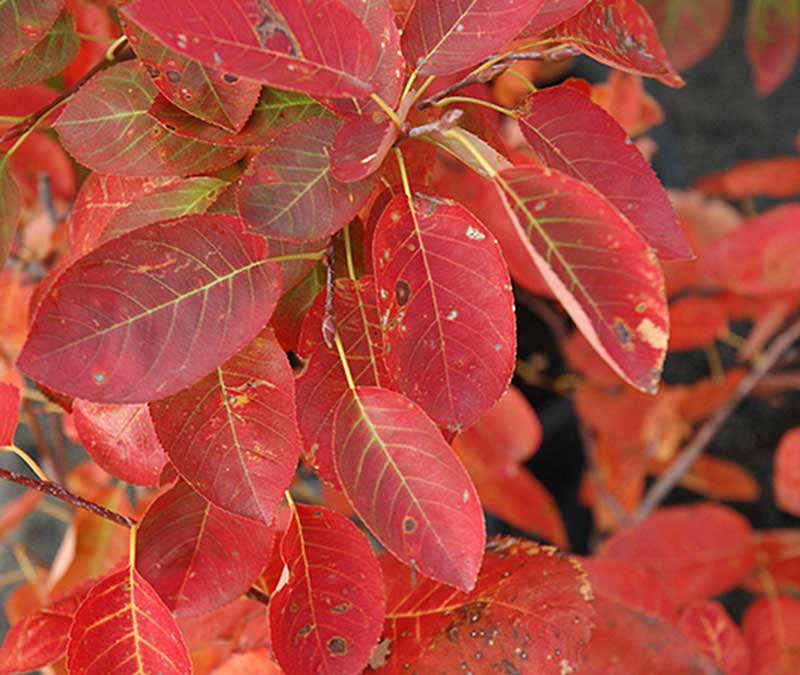
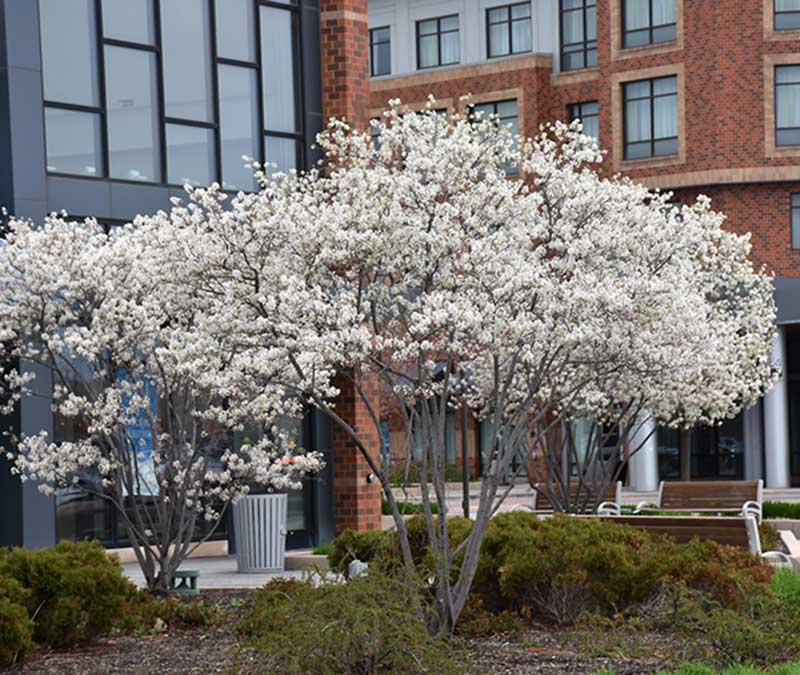
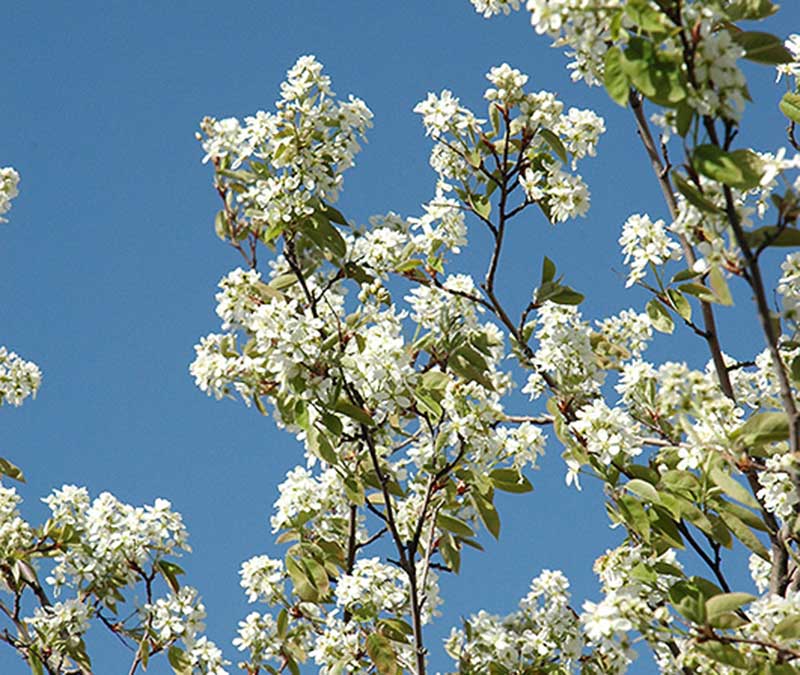
Witchhazel
Witchhazels are one of the first to bloom in the spring. Yellow filament like flowers bloom in early March. Witchhazels can be grown as a large shrub or small tree depending on pruning practices. They can reach 20’ tall and wide if left alone. The green leaves will turn a golden yellow in the fall.
